Rubber ficus, due to its name as a high concentration of rubber in thick juice, in the natural environment of growth is a source of raw materials for rubber production. In indoor floriculture, a plant from the Mulberry family is very popular among phytodesigners who are closely engaged in the gardening of their own and others' homes. Moreover, due to the undemanding culture, home care for rubber ficus is quite simple.
Material Content:
Ficus rubbery: the nuances of growing
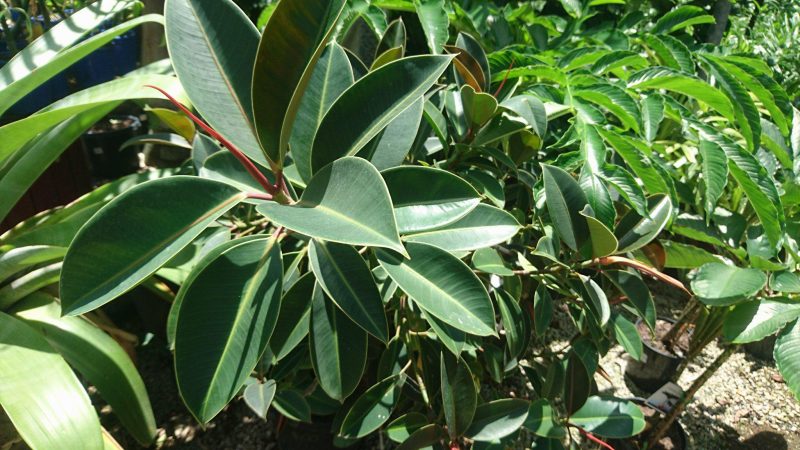
Growing a culture at home, you should take into account a number of features of the ficus:
- Growth and development. In an apartment environment, the height of the ficus varies within 2 m, and the trunk quite rarely pleases gardeners with lateral shoots. The rapid pace of development determines the annual growth of culture at 40–45 cm.
- Leaves. The decorativeness of the exotic representative lies in large, glossy sheet plates, painted in the same color or with a colorful pattern.
- Bloom. The phase occurs only when a plant is pollinated with certain insects, so in an apartment environment it is almost impossible to become the owner of a flowering ficus.
Home Care
Properly caring for ficus is simple, if you follow several important rules.
Lighting Features
A representative of the exotic flora prefers a large amount of diffused light, negatively related to the open sun, which can harm the plant. If it is not possible to place the flower near the windows of the eastern or western directions, the pot is allowed to be installed in partial shade, where the growth of the ficus will differ in average intensity, and the lower part of the stem will be quickly exposed.
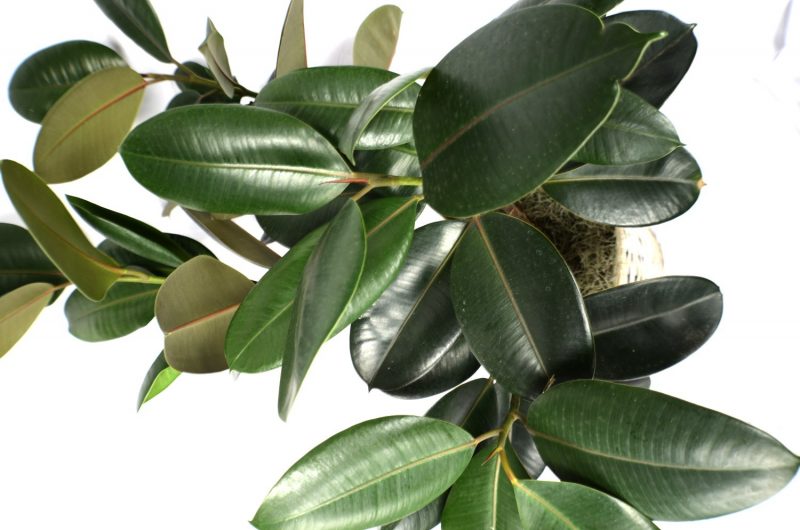
Caution! When landscaping the apartment, you should not place the flower in places where there are drafts.
Temperature mode
With the appropriate temperature conditions, it is necessary to focus on such optimal indicators:
- During the period of intensive vegetation, temperature values vary between 20–25 ° C.
- In winter, the temperature regime decreases, taking into account the maximum permissible mercury column of 15 ° C, below which cooling is not allowed.
Soil requirements
Rubber ficus fully develops on well-drained soil with a loose structure. A florist can prepare it independently from sheet, turf and peat soils with the addition of coarse sand in equal proportions. If desired, a substrate for growing ficus can be purchased at a flower shop.
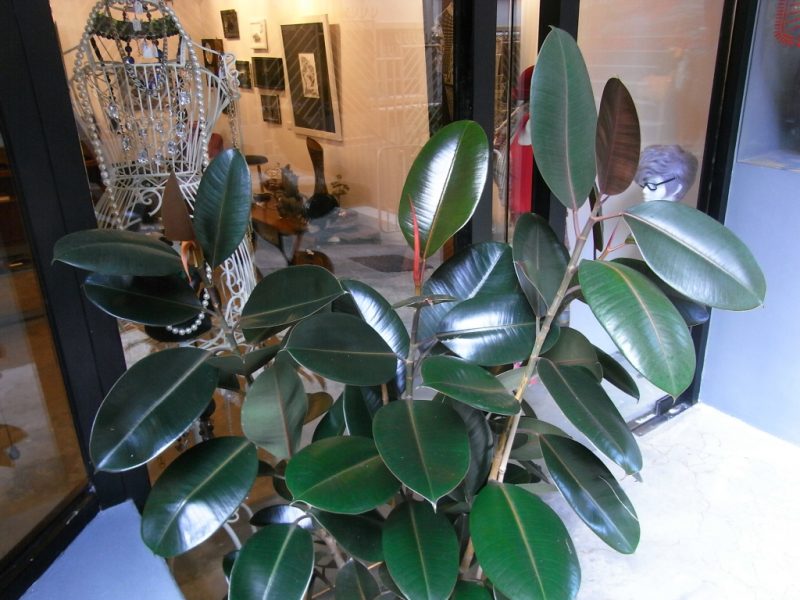
Watering and humidity
The soil is moistened as the earthen coma dries up: in summer, the procedure is carried out three times a week, and in winter - weekly. In case of excessive watering, there is a risk of the flower dropping leaves. Increased air humidity is organized by regular spraying, which in winter is replaced by wiping the sheet plates with a damp sponge. All water procedures are carried out with standing water at room temperature.
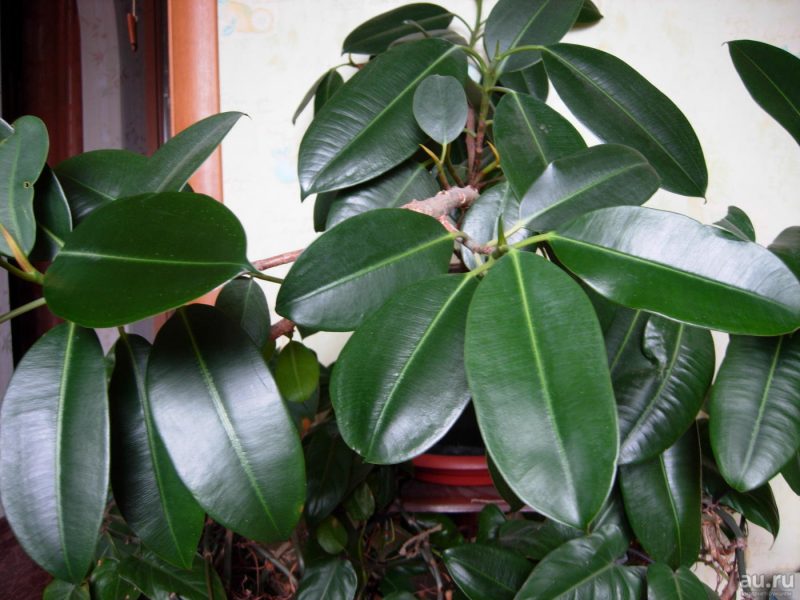
Top dressing
To admire a healthy, effective ficus, twice a month during the period of active growth, fertilizing with liquid complex fertilizers is carried out, which necessarily includes nitrogen.
Crown trimming and decoration
Trimming of rubber ficus is carried out in early spring to keep the plant in dimensions acceptable for the grower. Top shearing to ensure branching is not carried out, since, as a rule, one of the top points of growth awakens. In order to stimulate the awakening of the lateral buds, the stem must be cut to a height of 5-6 internodes.

Also, one of the following techniques can be used to form a thick crown:
- Piercing the stem by ⅓ diameter - the central shoot begins to prick from above, gradually moving lower.
- Correction of the ficus - the top of the plant bends and fixes until the kidney, which is on top is activated.
Plant transplant
Young ficus plants are transplanted annually, but as they grow older, the time interval between procedures increases to 2-3 years, when the roots become crowded in the old tank.

In the spring-summer season with a transplant:
- A pot is selected whose diameter and depth is 5 cm greater than the size of the previous one.
- A thick drainage layer is placed at the bottom of the dishes.
- From above, by transshipment, a flower falls.
- The resulting voids are carefully filled with the prepared substrate.
Advice! If the specimen is too old, it is better to replace the substrate layer to a depth of 4 cm instead of transplanting.
Pests and diseases - how to treat?
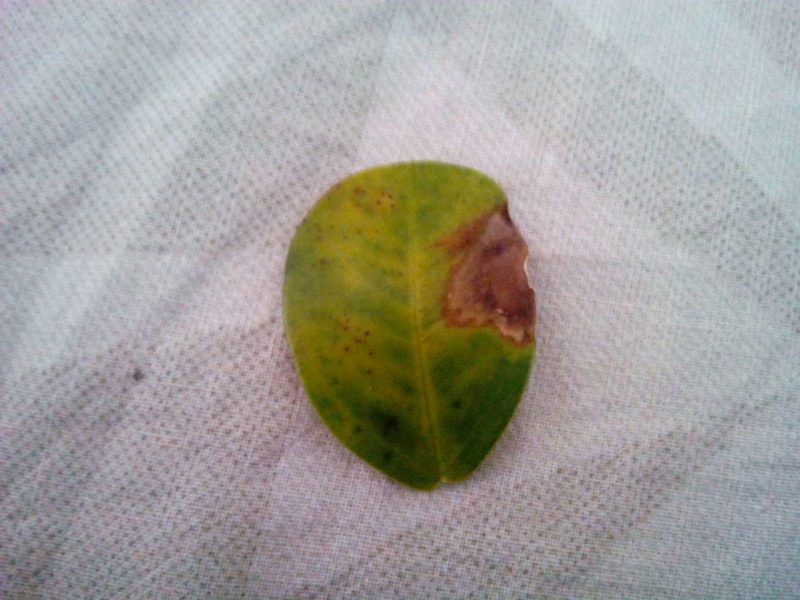
The culture has good resistance to the development of pathogens and the population of harmful insects. However, sometimes scabies and a spider mite are noted on the leaves of the ficus, which must be combated with soap solution in the early stages, and with a severe lesion - with an insecticide.
Reproduction of rubber ficus
Propagation of ficus by cuttings is the most effective way to breed monophonic varieties, the performance of which is possible for each grower.
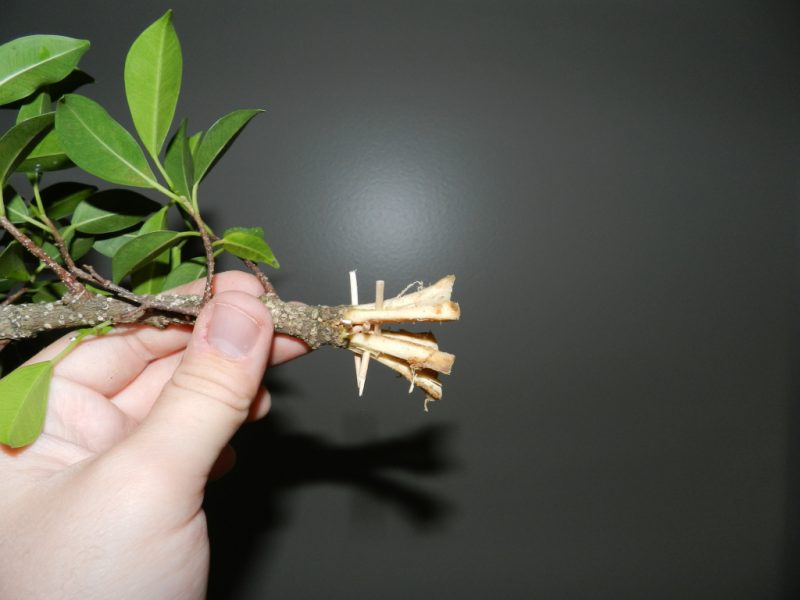
The procedure is carried out in the spring:
- Stalk cuttings 10-15 cm long are cut.
- All leaves are removed, except for 2-3 pieces in the upper part, which are folded with a tube.
- Each stalk is washed under running water until the milk secretion stops.
- Planting material is planted in a prepared substrate and covered with polyethylene for speedy rooting.
- During the period of root formation, the plantings are moistened and ventilated.
The variegated forms of rubber ficus propagate by layering. For the procedure to succeed:
- The stalk is cut into ⅓ thickness.
- The damaged area is wrapped with moss, which is fixed with polyethylene with tape.
- After the formation of roots, the layers are cut and planted in an individual pot.
What problems can a flower grower face?
There are several main problems that often arise during the cultivation of the discussed representative of the Mulberry family.
Yellowing leaves
Leaf plates begin to turn yellow in violation of the rules for flower care.
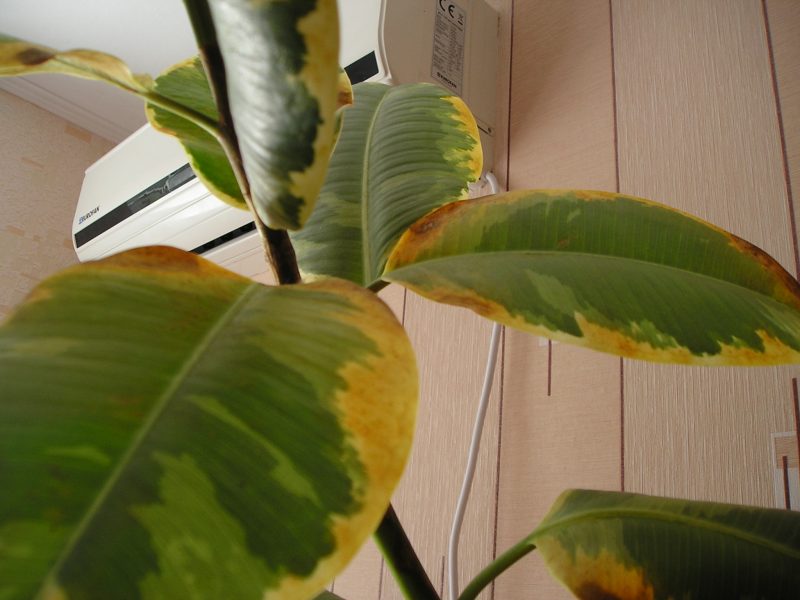
Among the possible reasons stand out:
- high concentration of fertilizers and other salts in the substrate;
- improperly sized pot - too much capacity;
- development of root rot.
Foliage dump
Old lower tier leaf plates fall off for natural reasons.

However, there are factors provoking the discharge of young greenery:
- excess moisture in the substrate;
- lack of watering for a long period of time;
- the presence of drafts and sharp temperature extremes;
- lack of light.
Suspension of growth
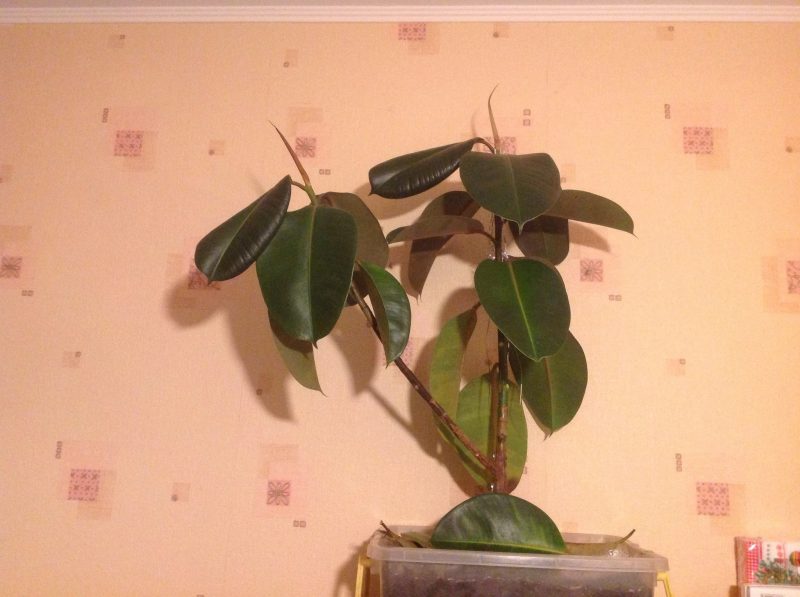
If the ficus has stopped developing, then three reasons stand out:
- lack of lighting;
- lack of nutrients;
- too close a pot.
The spectacular rubbery ficus with large, shiny leaves fits perfectly into any interior and cleans the air of various toxins. He is considered to be one of the best indoor plants used for landscaping, and therefore acquaintance with it invariably turns out to be pleasant even for an inexperienced grower.












